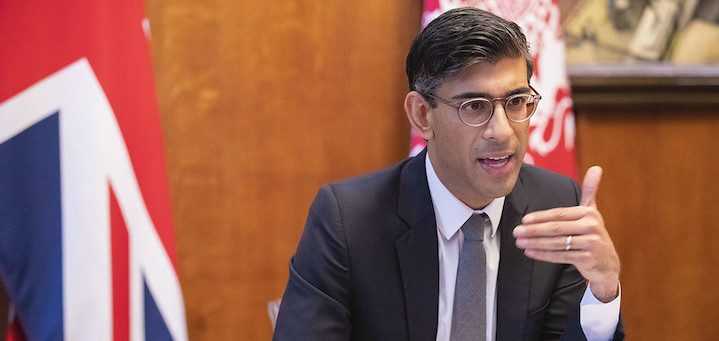
The government may allow increases in council tax much higher than current thresholds, writes Adrian Jenkins.
There is much that we do not know about the spending review later this month but one thing we do know: council tax is going to go up.
There were very clear signals from the government in September’s adult social care proposals that the “demographic and unit cost pressures” will be funded from “council tax, adult social care precept, and long-term efficiencies”.
All the signals since then have confirmed that the Treasury will put more pressure on councils to increase their Band D. Rightly or wrongly, the Treasury sees council tax increases as something that local, rather than national politicians, shoulder the blame for.
And when many other sources of additional taxation have been ruled-out, council tax remains a tax that can continue to be increased without too much political pain for central government.
Authorities with social care responsibilities are currently limited to a 2% increase in “core” Band D and a further 3% increase in Adult Social Care precept (spread over 2021-22 and 2022-23). Other types of authority have been limited to a 2% increase, with district councils allowed to increase Band D by the higher of 2% or £5.
In our forecasting, Pixel has assumed that the thresholds will remain at this level—but the indications from Westminster has been that much higher increases will be allowed. Indeed, that much higher increases will be required.
Turnaround
This is an odd turnaround. The Conservative-led “coalition” government between 2010 and 2015 had a policy to limit Band D increases.
Eric Pickles, the then secretary of state, even paid councils to freeze their council tax. For many this just stored up problems for the future when the freeze grant funding disappeared, and they were stuck with lower council tax yields.
Since 2015, however, the policy has gone into reverse. Even though there have been clear thresholds for the maximum increases, those thresholds have increased markedly.
To illustrate the change in policy, the average increase in Band D in 2010-15 was 0.6% per year and between 2015-22 a massive 4.7% per year.
29th November, 2021
London Stock Exchange
6th Annual FDs’ Summit
Lead sponsor PFM/UKMBA
Public sector finance directors can register here
The government seems to have cottoned on to the idea that if you badge a tax increase as an NHS or social care payment, people will support it (or at least not grumble about it too much).
The health and social care levy will be set at 1.25% for both employees’ and employers’ national insurance contributions, but many commentators think these contributions will have to increase further in the near future. This is almost certainly right because of the pressure on both health and social care, but it is likely a decision for a future year.
It is also worth reminding ourselves that the £5.4bn additional funding for social care announced in September, and funded from the 1.25% increase in NICs, will be used entirely to fund changes in who pays for social care. There is none available to fund existing or future social care pressures. The result is that local authorities are under more pressure to increase council tax.
Logic
The logic of no (or very low) increases in funding for social care and other local government services in the next spending review, and a reliance on council tax increases, suggests Band D increases over the next three years will have to be very high. Possibly, even much higher than the average increases in the 2015-22 period and the current council tax thresholds.
The Institute for Fiscal Studies (IFS) forecasts that local authorities will have to increase Band D by an average of 3.6% per year to close the current funding gap, but this assumes that there will be no new funding pressures.
The County Councils Network (CCN) uses its members’ budget forecasts to build up a more realistic picture of the pressures local authorities will have to deal with. It estimates that Band D will have to increase by “up to 7.99%” to eliminate the funding gap.
It is fairly clear that the current council tax thresholds will have to be much higher than they currently are if council tax is going to allow councils to balance their budgets.
Would ministers really countenance Band D increases close to double figures? Some reports have suggested that the spending review will remove all restrictions on council tax increases. The last time there were no restrictions on Band D increases was in 2003, when Nick Raynsford was local government minister.
That experiment lasted for just one year, as local authorities let rip and increased council tax by 12.9%. The Treasury will always prefer the least painful way of raising taxation—and council tax has proved to be an effective way of doing so.
Risk
But the political risks of removing all restrictions is probably too great. Given those political risks, we would expect much higher and more flexible thresholds rather than their total removal.
Is continued above-inflation increases in council tax politically feasible? Anecdotally, local politicians are starting to get nervous. In 2021-22, about one-third of upper-tier authorities did not use their maximum threshold (5%). Some of those that held back did so largely because there were local elections last year, and increases could be postponed to 2022-23.
Nationally, there is an incipient cost of living crisis, which might make ministers cautious about giving authorities total freedom over council tax increases. Whatever the balance that is struck in the spending review negotiations, local authorities can be fairly sure that they will be under pressure to increase Band D by much more than inflation.
Adrian Jenkins leads the funding advisory service at Pixel Financial Management.
Photo: HM Treasury, Flickr.
—————
FREE monthly newsletters
Subscribe to Room151 Newsletters
Room151 Linkedin Community
Join here
Monthly Online Treasury Briefing
Sign up here with a .gov.uk email address
Room151 Webinars
Visit the Room151 channel















